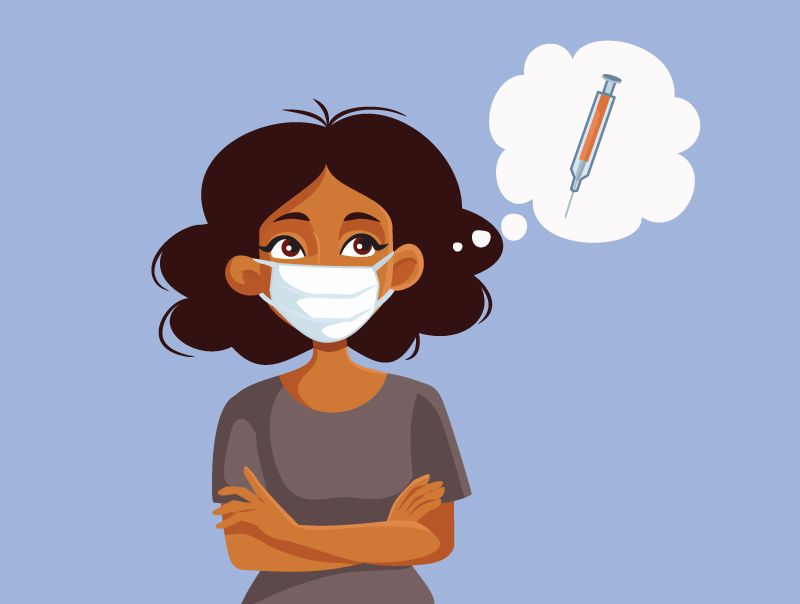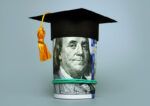San Joaquin County’s Diversity Challenge – Misinformation and Vaccinating Refugees, Rural Migrants, Isolated Older Adults, Unhoused People
San Joaquin ranks 31 among the state’s 58 counties for adults who have completed the primary COVID vaccines and is struggling to raise booster and vaccine rates for younger kids. The county has drawn on an innovative mix of programs to reach an increasingly diverse mix of rural migrants, recently settled refugees, low-income and unhoused people.

At an Ethnic Media Services briefing, July 28, speakers – Dr. Maggie Park, San Joaquin County Public Health Officer; HengSothea Ung, Program Director, Apsara (serving Cambodian refugees); Kevin Sunga, Health Director, Little Manila Rising; Jose Rodriguez, President, El Concilio; Zonnie Thompson, Community Organizer, Faith in the Valley Stockton; and Nick Worrell, Unhoused – include public health officials and community organizers who have worked on the frontlines of the pandemic since its start.
Dr Maggie Park, San Joaquin County Public Health Officer
“Our county has a large population, perhaps not a huge footprint, but we are by population the 15th largest county in the state of California. We are quite diverse, we have so many different populations of people to reach with education, with testing, with vaccines.
“It’s not just that we have different populations by language, but those people also represent different cultures, different ways of thinking.
“We have different geographic areas, from very urban areas to very rural areas, in our county and so it’s been a challenge to try to reach all of them with the measures that we have, to mitigate Covid.
“We’ve had to date 934 cases confirmed by PCR and that represents a current case rate of about 35 per 100,000, which is quite high, despite knowing that there is a severe undercount.
“The number is much higher because this only is the count of how many people are doing PCR tests at testing facilities that then get submitted to laboratories. Many people are now doing rapid tests at home that don’t go into this count.
“The BA.5 sub variant of Omicron is really driving this. We’ve seen our hospitalizations rising because of this subvariant.
“We have evidence that vaccines save lives and we are really trying to get that education out there in messages, in ways that touch people, in ways that try to get them over any hesitancy, they may have, and yet we’re only 65.6% fully vaccinated in San Joaquin County, and that is the number of people five-years-old and above, who have received two doses.
“A lot of the older folks 50 and above, and people at risk should really be on to their third or even fourth dose, so their second booster. We would want to drive that number up and we’ve been trying to get that number up.
“If you take into account the now eligible six-month-olds to four-year-olds, that puts that number down to 61.8 percent fully vaccinated when you add in those children in the county who are still not vaccinated, we have a large number of people 65 and up, fully vaccinated, 85 percent of them are vaccinated with two doses, but only 57 percent boosted, so still we have somewhere to go to educate the community, that your vaccine immunity might be waning.
“We also try to follow how many people might have long Covid and there’s a calculation that the CDC uses to try to give these estimates based on how many cumulative cases you’ve had so far.
“We believe we’ve had 25,000 cases of people having long Covid with at least one month of symptoms post infection, and 5,000 people who are experiencing long Covid three months post infection.
“In the beginning of vaccines, when they were rolled out, vaccines were limited and at first we were only giving them to health care providers and select groups, then the state added in teachers, law enforcement, agricultural workers, grocery shop workers, and as a county we really tried to focus on those essential workers who were not working at home, who are still out in the field, and still at risk every day.
“Agriculture is big in the San Joaquin valley, and we have many seasonal migrant workers coming through our county. We wanted to vaccinate them though we know that they don’t stay here for long. We were committed to the Central Valley of California as a group to wholly vaccinate them as they move from county to county, and we did reach out to the agricultural commissioner and some politicians to try to work with farm workers and get vaccine events going at farms and plant distribution centers.
“We also worked with farm worker housing units to get people vaccinated where they were staying and living. We’ve done a lot of vaccine events and tried to focus on that low equity quartile – the people who are most at risk from either living in poverty, having poor education, poor access to health care, and transportation.
“We’ve done vaccine events in low-income housing units, we targeted churches in underserved areas, and zip code areas that we know were under vaccinated and were in the lowest health equity quartile.
“We did events for veterans – the elderly care providers trying to target people that we knew might be at risk. We worked with the RTD. They now have a service where people can be driven to vaccine events. We had a physician locally do a fund drive and there was money put into getting people to the vaccine events in Lyft and Uber rides. We’ve also created a vaccine team here at public health that does vaccinations for homebound folks. We have a drive of nurses going around every week doing that. We try to reach out to people who are medically vulnerable, talked to the health plan of San Joaquin and some of our earliest vaccine events were done for those people on Medi-Cal who had diabetes and for the unhoused and homeless.
“We worked with Loads of Hope laundry service that does laundry for the homeless and with their van. We put our van next to theirs, placed our van at the Saint Mary’s dining hall where some of our homeless population go to find a meal and we try to get people vaccinated that way.
“We know that our Hispanic population has made up a larger proportion of people who have had Covid, then are Whites, and Asians.
We do look at populations of color – Hispanics, Asians, Black populations to really see that some of the focusing needs to be done there, so we’ve tried to reach out,” said Dr Park.
What would you say is your biggest challenge?
“It’s the reasons why people are hesitant, and we’ve asked that in surveys, we’ve asked that to our resilient advisory committee, and it’s ‘still trying to get over a lot of the misinformation and disinformation that’s out there and some of it is obvious – things that we hear about in the Media.
“People are afraid about infertility, cancer, chips, but then some very interesting people who say that they’ve heard that if they get a vaccine, they can’t drink beer afterwards.
“We’ve heard interesting stories and constantly trying to overcome the misinformation and disinformation,” said Dr Park.
Other speakers resonated with Dr Park with respect their own communities and the general consensus was one big concern – misinformation.


